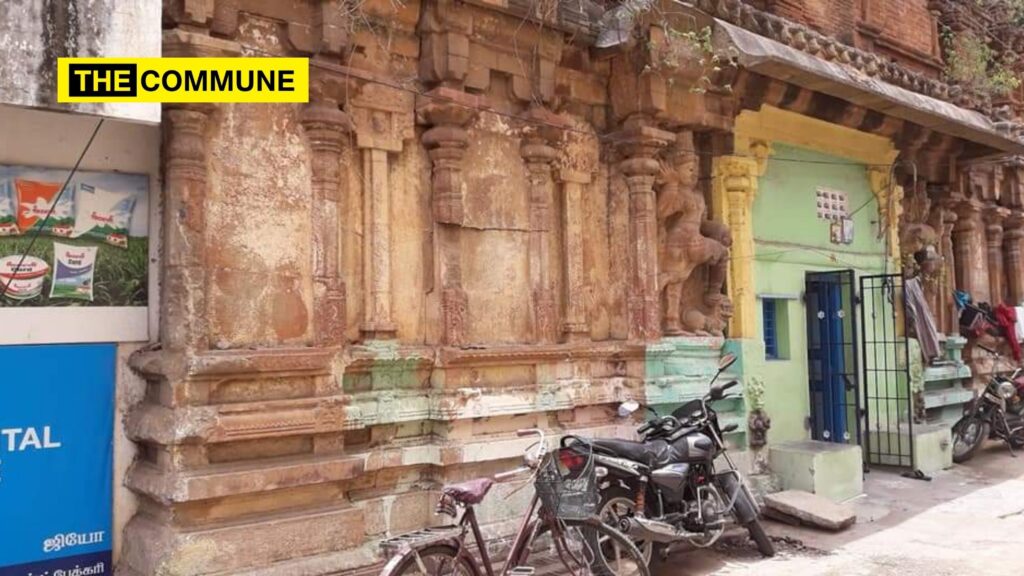Located in the quaint village of Thopparangatti in Thanjavur district is a Vinayagar Temple said to have been built during the reign of the Vijayanagara Empire. For long, it was thought that the temple did not have a gopuram (entrance tower). However, a family has been squatting under the gopuram for 60 years and has even built a house under it. While it is normal to wish for having a house with stellar architecture, this family has gone to the extent of appropriating the gopuram for themselves.
About 60 years ago, a 430 sq. ft. mandapam (hall) under the royal tower of the temple was leased by the Dharmavans who were then in charge of the administration of the temple to a temple worker named Sabapathy Pillai.
Sabapathy had built a house there and after his death his son Jayaraman and wife Shyamala have been living in this house. Now, only Shyamala lives in this place which has been completely converted into a house with doors, floors and windows without any sign of a temple gopuram.
Despite the growing opposition from the locals, Shyamala has been adamant to not vacate from the place. The locals had raised the matter with Tamil Nadu Hindu Religious and Charitable Endowments (HR&CE) Department. However, as is always the case, the HR&CE department had dragged its feet claiming that they cannot be called encroachers because of the lease agreement.
Finally, the HR&CE department removed the ‘occupation’ with the help of the authorities after ordering the cancellation of the contract given to Sabapathy Pillai.
The temple comes under the administrative control of the (HR&CE) Department. Along with this temple, the HR&CE controls around 88 temples including the famous Brihadeeswarar Temple.
The incident has left the Hindus in a state of anguish as to what would happen to the other movable and immovable temple properties under the control of the HR&CE department.

